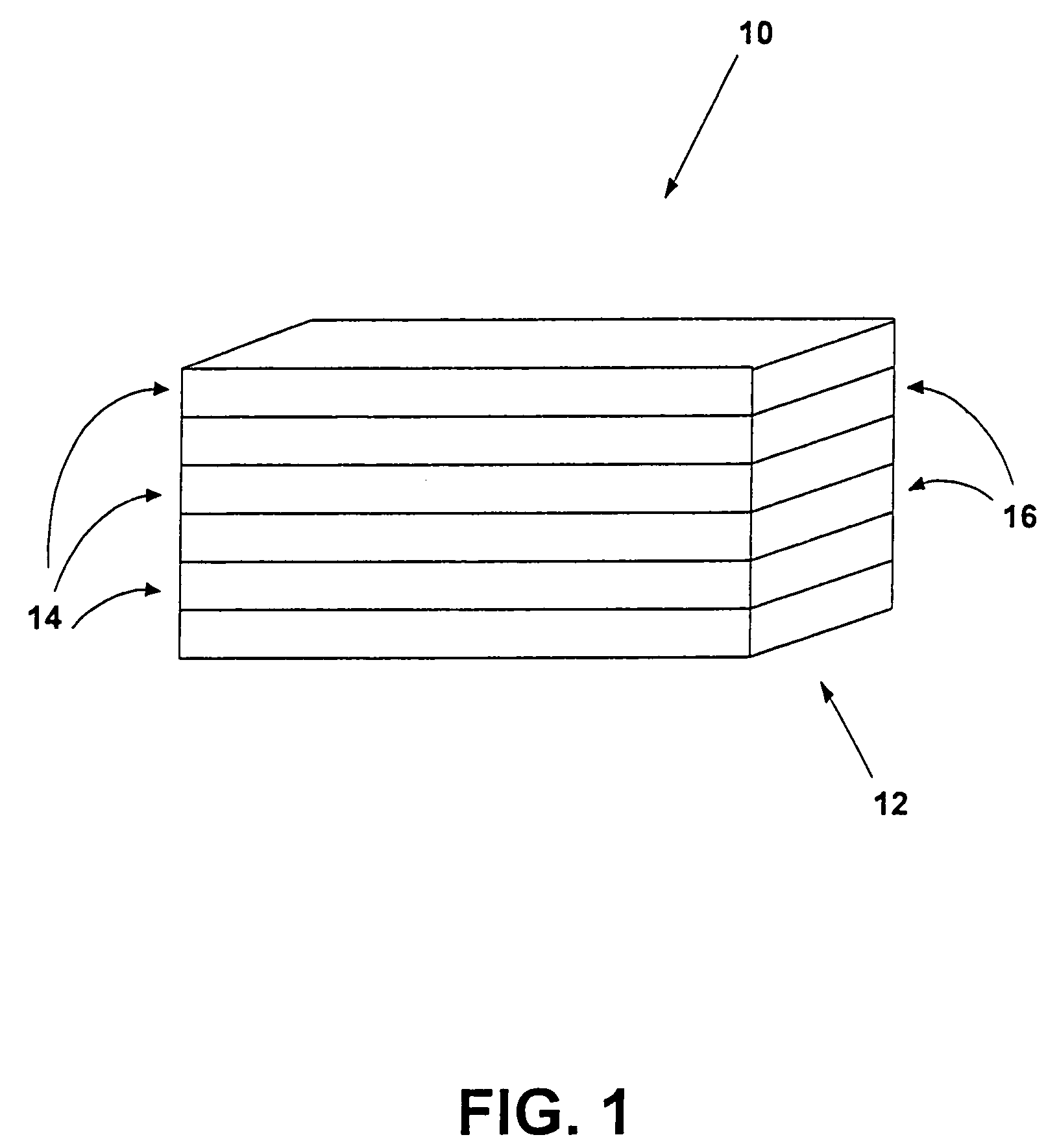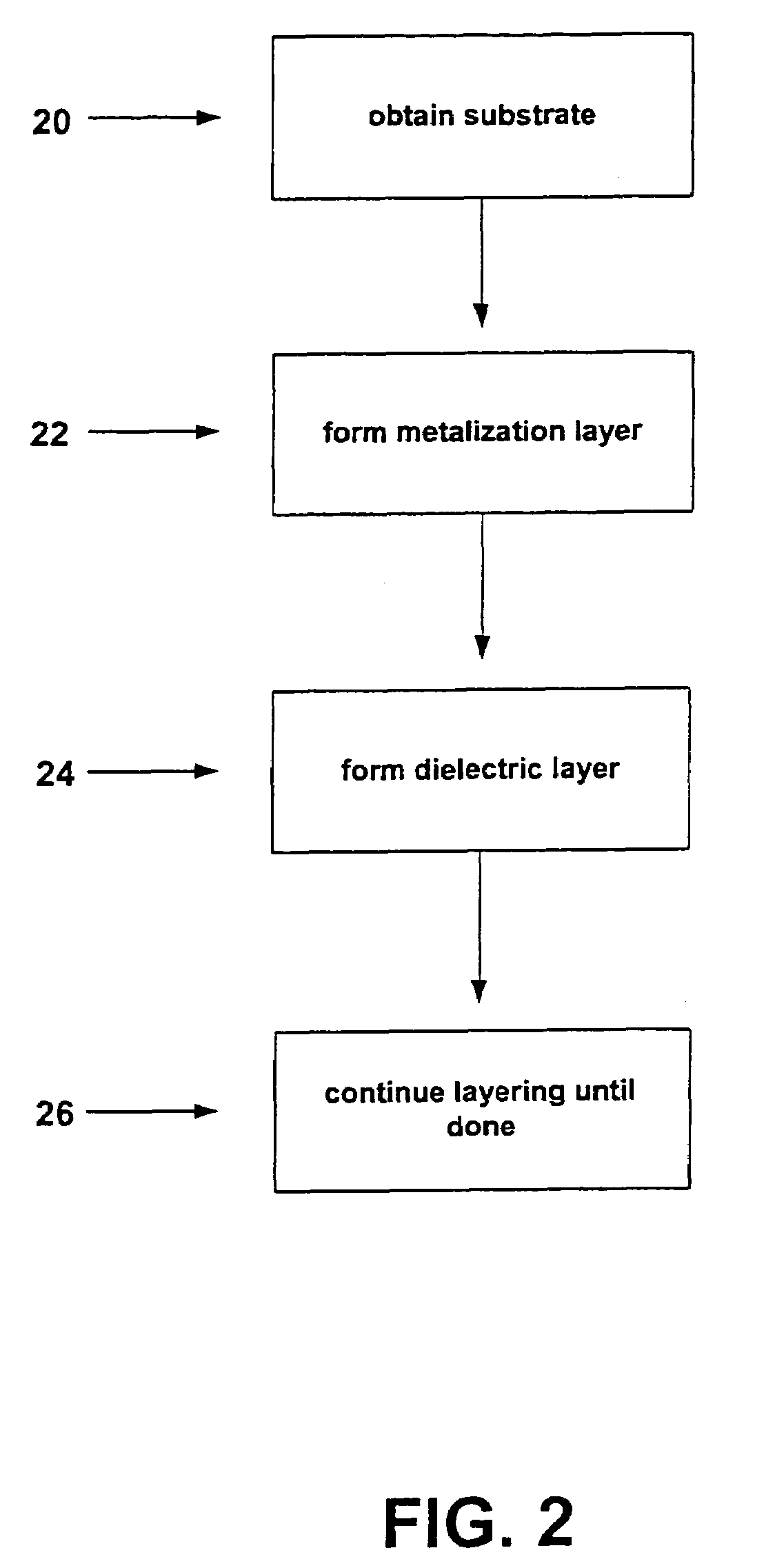Multilayer substrate
a multi-layer substrate and substrate technology, applied in the direction of printed electric component incorporation, semiconductor/solid-state device details, printed element electric connection formation, etc., can solve the problem that the number of layers of the multi-layer substrate cannot be increased, the thickness of the green sheet is not suitable, and the conventional multi-layer substrate fabrication technique cannot accommodate the thickness of the green sheet less than 6 mil, etc. problem, to achieve the effect of accurate control by the user, high purity, and accurate control of dimension shrink
- Summary
- Abstract
- Description
- Claims
- Application Information
AI Technical Summary
Benefits of technology
Problems solved by technology
Method used
Image
Examples
Embodiment Construction
[0046]In the following description of preferred embodiments, reference is made to the accompanying drawings which form a part hereof, and in which are shown by way of illustration specific embodiments in which the invention may be practiced. It is to be understood that other embodiments may be utilized and structural changes maybe made without departing from the scope of the preferred embodiments of the present invention.
[0047]A multilayer substrate 10 according to an embodiment of the present invention is shown generally in FIG. 1. The multilayer substrate 10 may contain a plurality of alternating dielectric layers and conductive layers. As shown in FIG. 1, the multilayer substrate 10 starts with a base substrate 12, on top of which is a metalization, or conductive, layer 14. The multilayer substrate 10 of FIG. 1 includes two other metalization layers 14. Sandwiched in between the metalization layers 14 are dielectric layers 16.
[0048]The base substrate layer 12 may be rigid or flex...
PUM
 Login to View More
Login to View More Abstract
Description
Claims
Application Information
 Login to View More
Login to View More - R&D
- Intellectual Property
- Life Sciences
- Materials
- Tech Scout
- Unparalleled Data Quality
- Higher Quality Content
- 60% Fewer Hallucinations
Browse by: Latest US Patents, China's latest patents, Technical Efficacy Thesaurus, Application Domain, Technology Topic, Popular Technical Reports.
© 2025 PatSnap. All rights reserved.Legal|Privacy policy|Modern Slavery Act Transparency Statement|Sitemap|About US| Contact US: help@patsnap.com



